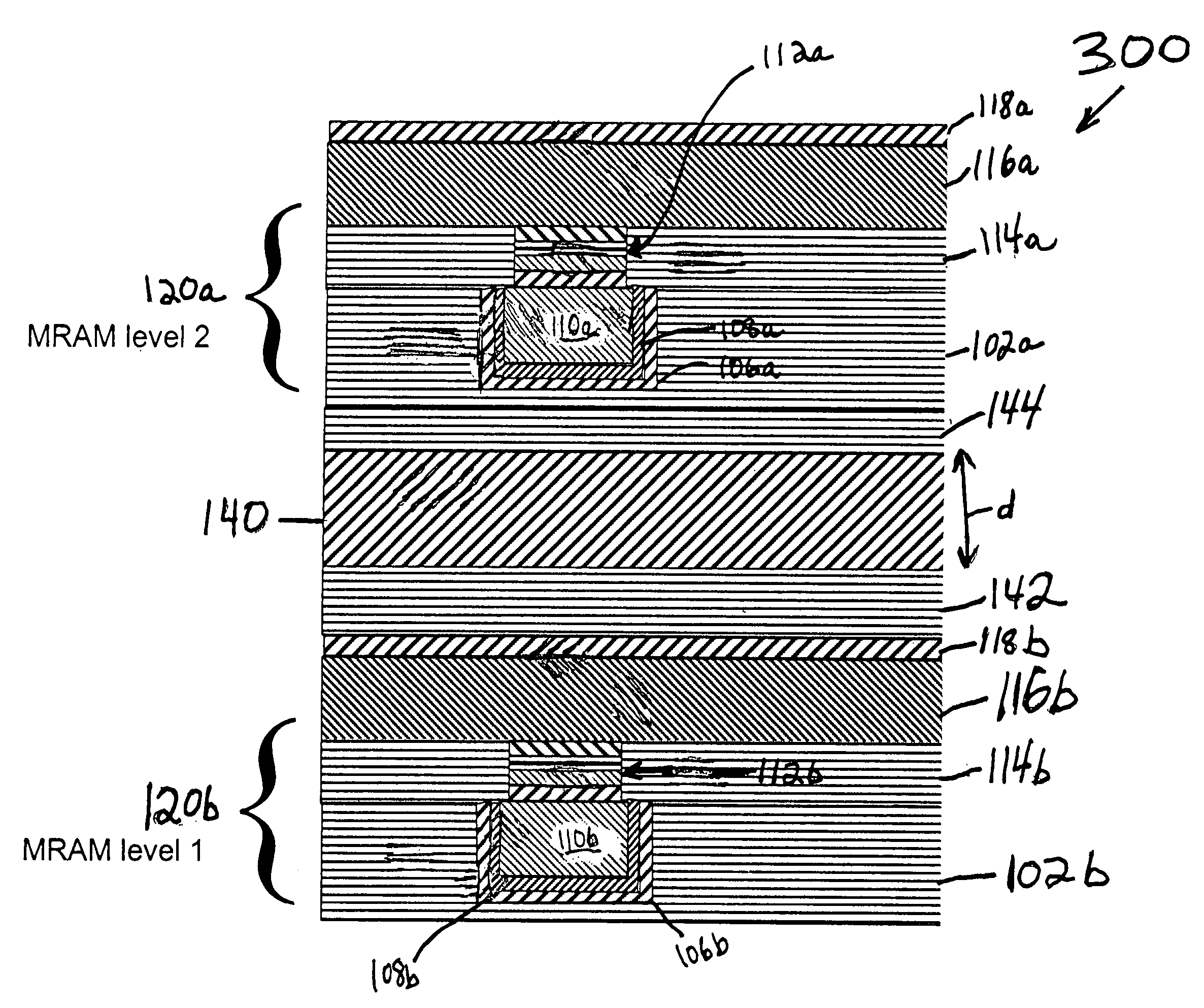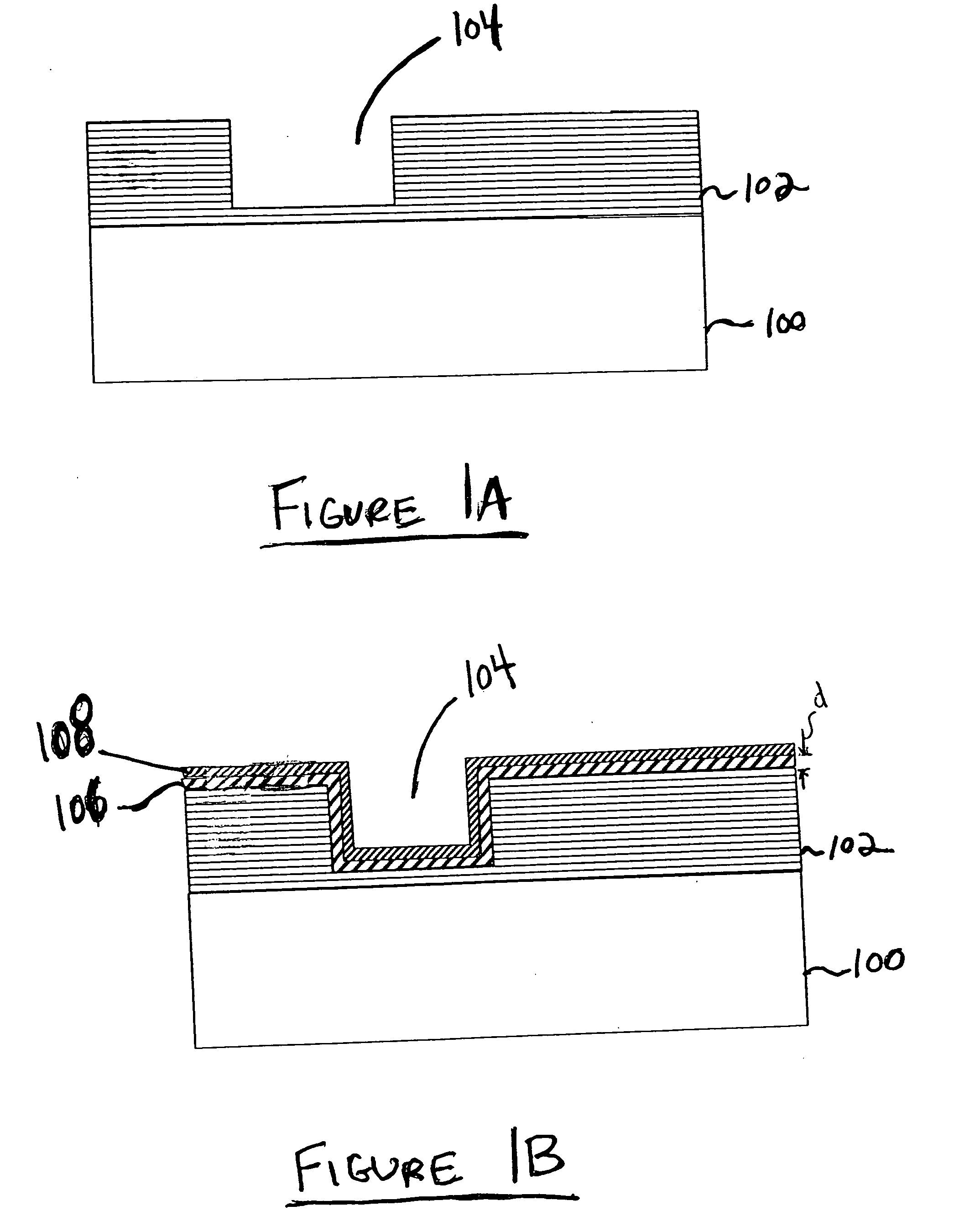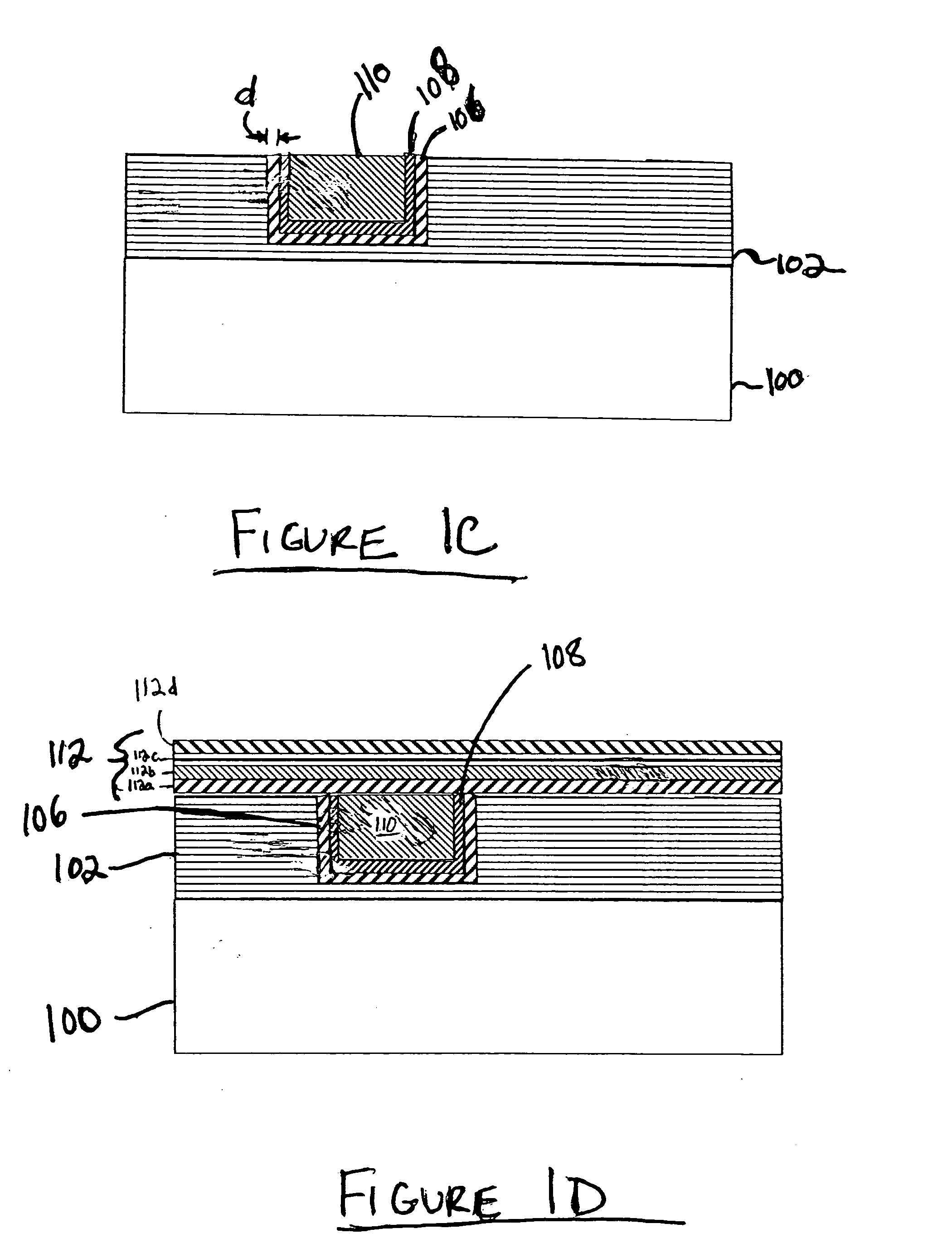Amorphous soft magnetic shielding and keeper for MRAM devices
a magnetic shielding layer and soft magnetic technology, applied in the direction of magnetic field-controlled resistors, semiconductor devices, semiconductor/solid-state device details, etc., can solve the problems of increasing write efficiency, reducing device power consumption, and unpractical thickness requirements of magnetic shielding layers, so as to eliminate barrier layers
- Summary
- Abstract
- Description
- Claims
- Application Information
AI Technical Summary
Benefits of technology
Problems solved by technology
Method used
Image
Examples
Embodiment Construction
[0038] The present invention will now be described in detail with reference to the drawings, which are provided as illustrative examples of the invention so as to enable those skilled in the art to practice the invention. The preferred embodiment of the soft magnetic shield and keeper and the method for forming the same are described in relation to a multi-layer MRAM fabrication procedure. However, it will be appreciated by those skilled in the art that the present invention is equally applicable to other types of fabrication procedures.
[0039] Generally, soft magnetic thin film materials can be classified in three main classes including: (1) crystalline metallic films such as Permalloy (NiFe alloys around the composition Ni80Fe20), FeXN (where X may be a metal such as Ta, Al, Ti, etc.), and the like; (2) Oxidic metallic films such as Manganese Zinc Ferrite or Nickel Zinc Ferrite; and (3) amorphous metallic films such as CoNbZr, CoTaZr or CoPdZr. While prior art MRAM fabrication pro...
PUM
| Property | Measurement | Unit |
|---|---|---|
| thickness | aaaaa | aaaaa |
| temperature | aaaaa | aaaaa |
| aspect ratio | aaaaa | aaaaa |
Abstract
Description
Claims
Application Information
 Login to View More
Login to View More - R&D
- Intellectual Property
- Life Sciences
- Materials
- Tech Scout
- Unparalleled Data Quality
- Higher Quality Content
- 60% Fewer Hallucinations
Browse by: Latest US Patents, China's latest patents, Technical Efficacy Thesaurus, Application Domain, Technology Topic, Popular Technical Reports.
© 2025 PatSnap. All rights reserved.Legal|Privacy policy|Modern Slavery Act Transparency Statement|Sitemap|About US| Contact US: help@patsnap.com



